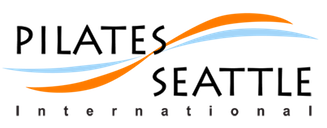The Life of Joseph Hubertus Pilates as compiled by Gregory Baisden
“Physical fitness is the first requisite of happiness,” wrote Joseph Hubertus Pilates in his book Return to Life Through Contrology. “It is the attainment and maintenance of a uniformly developed body as well as a sound mind, fully capable of naturally, easily and satisfactorily performing our many and varied daily tasks with spontaneous zest and pleasure.”
Joe knew of what he spoke. By the time he wrote these words in 1945, he had rehabilitated himself from a frail child to a robust athlete respected by performers from every area of physical endeavor and expression. Indeed, as Mari Winsor notes in her 1999 book The Pilates Powerhouse, Joe became “…a revolutionary force in the world of fitness.” He did this by devising a stringent, rigorous system for developing the physical fitness he championed, a system that has not only survived and prospered for 80 years, but that has spread around the world – sometimes in Joe’s exacting form, and at times diffused into other disciplines.
Joe knew what he was on to, and he sensed that it would take on a vitality equal to his own after his passing. As he was pleased to tell people, “When I’m dead, they’ll say ‘He was right.’ I’m 50 years ahead of my time.” Now, more than half a century since he codified his method as Contrology – and nearly four decades since his passing, Joseph Pilates’ work enjoys a dedicated core of popular and celebrity clientele, and contines to spread rapidly.
This collection of columns Know Your Joe presents the remarkable life story of Joseph Hubertus Pilates – from his unique inspiration to his amazing legacy. Our purpose is not merely to recount the familiar superficial details, but to reveal some fascinating facts and events of the forgotten past, some of the more subtle significancies of Pilates’ innovations, some of the memories of those involved with Joe, his studio and his work have to share. We hope to draw a portrait of the powerful and demanding athlete, philosopher, and fitness activist who was our benefactor and founder.
Joseph Hubertus Pilates was born of Greek ancestry in 1880 just outside Dusseldorf in the heart of the Ruhr Valley, one of the most fertile regions of west-central Germany. Actually straddling the Rhine, Dusseldorf was at the time of Pilates birth rapidly expanding from its medieval origins as a fishing village into one of the country’s primary industrial centers. In fact, rich with immense deposits of coal, the Ruhr River Basin provided the core of German manufacturing during both world wars, and today is one of the world’s most intensely developed industrial regions, producing most of Germany’s iron, steel, machinery and other metal products, chemicals and textiles. As a child, Pilates watched his hometown boom with the advent of an extensive network of railroads and waterways allowing direct access along the Rhine to the Atlantic Ocean, and he matured in an increasingly vigorous and worldly cultural crossroads, just a few hours north of metropolitan Cologne.
Pilates didn’t share Dusseldorf’s vigor. A frail child, he contracted rickets (a softening in skeletal tissue that in extreme instances causes devastating deformity of the spine and legs) before his tenth birthday. This culminated in a debilitating bout of rheumatic fever, painfully swelling the young boy’s joints and leaving him fearful for the health of his heart. Throughout his childhood Pilates suffered from asthma so severe that for a time he also feared an onset of tuberculosis. Pilates left no known reflections on his early ailments, but perhaps he came to believe, or intuitively recognized, that his illnesses most probably were exacerbated by his surroundings, a smelting and heavy manufacturing environment we would today recognize as toxic, for he later noted in Return to Life that, “It is rather difficult to gain ideal physical fitness under the handicap of breathing the soot-saturated air of our crowded and noisy cities day after day.” Certainly, years later, he would assure himself a country retreat shortly after establishing his studio in New York City.
